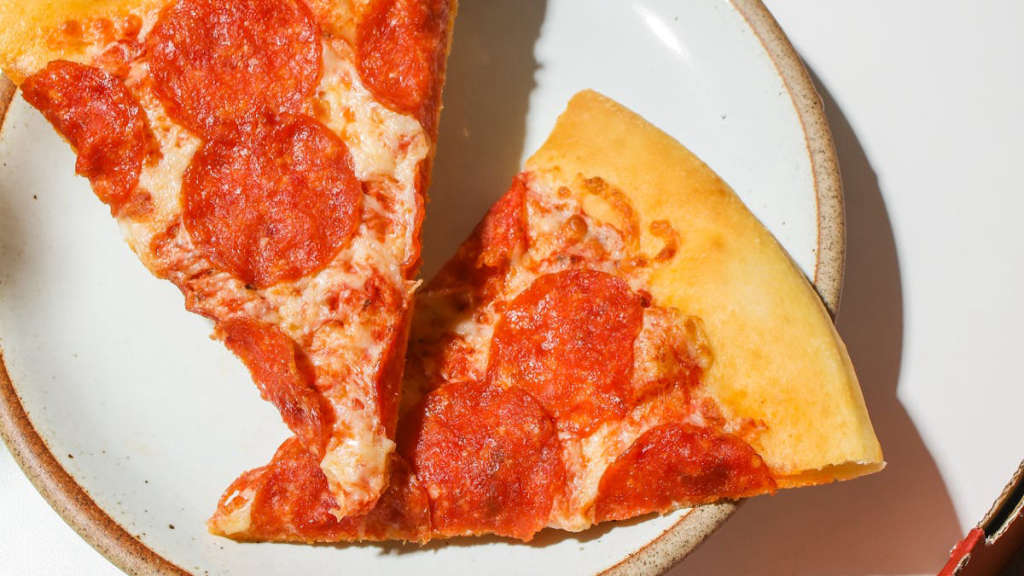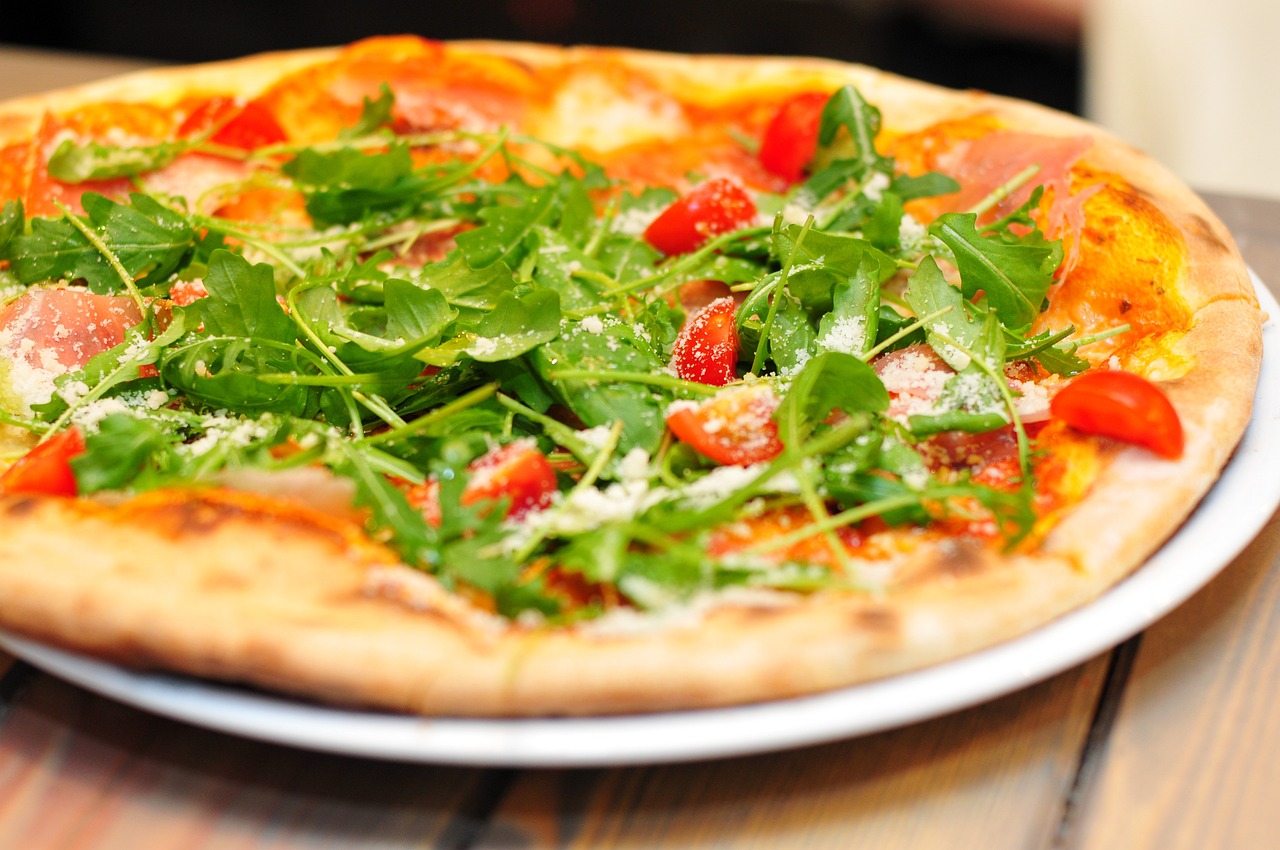Are you looking for a healthier alternative to traditional pizza crust? Look no further than Cauliflower Crust Pizza! This low-carb, gluten-free option is not only delicious but also easy to make at home. With just a few simple ingredients, you can create a homemade Cauliflower Crust Pizza that is sure to satisfy your pizza cravings. In this step-by-step guide, we will walk you through the process of making your own Cauliflower Crust Pizza and provide some delicious topping ideas to try. Whether you are following a low-carb diet or simply looking to switch up your pizza routine, this recipe is a must-try!
How to Make Cauliflower Crust Pizza: A Step-by-Step Guide Main Points
- Ingredients for Cauliflower Crust Pizza
- Step-by-Step Instructions for Making Cauliflower Crust Pizza
- Delicious Topping Ideas
- Benefits of Low-Carb Cauliflower Crust Pizza

Selecting the Perfect Cauliflower for Your Pizza Crust
When making a cauliflower crust for your pizza, selecting the right cauliflower is essential for the success of your recipe. Here are a few tips to ensure you choose the perfect cauliflower for your pizza crust:
1. Look for Firmness
When you’re at the grocery store or farmer’s market, pick up the cauliflower and give it a gentle squeeze. The head of cauliflower should feel firm and dense, indicating that it is fresh and full of moisture. Avoid cauliflower that feels soft or has any dark spots.
2. Check the Color
Inspect the color of the cauliflower. The best cauliflower for pizza crust is a creamy white color with no signs of browning or discoloration. The leaves surrounding the cauliflower should be vibrant and green, not wilting or turning yellow.
3. Consider the Size
For making a cauliflower crust pizza, it’s best to choose a medium-sized cauliflower. A head that is too large may result in excess moisture, while a small head may not yield enough cauliflower rice for your crust.
By keeping these tips in mind, you can select the perfect cauliflower for your cauliflower crust pizza recipe, whether you’re making a low-carb version or indulging in a homemade cauliflower crust pizza.
Remember, the key to a delicious cauliflower crust pizza lies in the freshness and quality of the cauliflower you choose.

Preparing and Ricing the Cauliflower
One of the key steps in making a delicious cauliflower crust pizza is preparing and ricing the cauliflower. This crucial step is what gives the crust its unique texture and flavor. Here’s how to do it:
Ingredients:
| 1 head of cauliflower |
|---|
Instructions:
- Start by preheating your oven to 400°F and lining a baking sheet with parchment paper.
- Remove the leaves and stem from the cauliflower, then cut it into florets.
- Place the florets in a food processor and pulse until they resemble the texture of rice.
- Transfer the riced cauliflower to a microwave-safe bowl and microwave on high for 5-6 minutes, or until it is cooked through.
- Once the cauliflower is cooked, place it in a clean kitchen towel and wring out as much moisture as possible. This will help ensure a crispy crust.
By ricing the cauliflower and removing excess moisture, you’ll be on your way to creating a perfect cauliflower crust pizza. This step is essential for a crispy and delicious crust that can hold up to all of your favorite toppings.
Give this easy cauliflower crust pizza recipe a try for a gluten-free alternative that is both tasty and nutritious! You won’t be disappointed with the results.
Remember to always have fun when cooking, and don’t be afraid to experiment with different flavors and toppings.
Draining Excess Moisture from the Cauliflower Rice
When making cauliflower crust pizza, it’s important to ensure that the cauliflower rice is as dry as possible. Excess moisture in the cauliflower rice can result in a soggy crust, which nobody wants!
To drain the excess moisture from the cauliflower rice, start by cooking the cauliflower rice in a skillet over medium heat. This will help to evaporate some of the moisture. Once the cauliflower rice is cooked, transfer it to a clean kitchen towel or cheesecloth. Use the towel to wring out as much moisture as possible. You’ll be surprised at how much liquid you can extract from the cauliflower rice!
Another method for draining excess moisture from the cauliflower rice is to spread it out on a baking sheet and bake it in the oven at a low temperature for about 15-20 minutes. This will help to dry it out further before using it to make the pizza crust.
Final Thoughts
Draining excess moisture from the cauliflower rice is a crucial step in making a delicious cauliflower crust pizza. By taking the time to remove as much liquid as possible from the cauliflower rice, you’ll end up with a crispy, delicious crust that holds up well to all of your favorite toppings. So don’t skip this important step, and enjoy your homemade cauliflower crust pizza!
Mixing the Cauliflower with Other Ingredients for the Crust
When it comes to making a cauliflower crust, it’s essential to mix the cauliflower with other ingredients to create a sturdy and flavorful base for your pizza or other dishes. Here’s how to do it:
Ingredients:
| 1 head of cauliflower | Finely grated in a food processor |
|---|---|
| 1 egg | For binding the crust |
| 1/2 cup of grated Parmesan cheese | For added flavor and texture |
| 1 teaspoon of dried oregano | For a hint of Italian flavor |
| Salt and pepper | To taste |
Once you have all of your ingredients prepared, it’s time to mix them together to form the crust. Here’s a step-by-step guide:
- Pulse the Cauliflower: Place the finely grated cauliflower in a microwave-safe bowl and cook it on high for 4-5 minutes, until soft. Let it cool before proceeding.
- Combine Ingredients: In a large mixing bowl, combine the cooked cauliflower, egg, Parmesan cheese, dried oregano, salt, and pepper. Mix well until fully combined.
- Form the Crust: Once the mixture is evenly combined, press it onto a lined baking sheet to form the crust shape you desire. Make sure it’s evenly spread and compacted.
- Bake: Bake the crust in a preheated oven at 425°F for 15-20 minutes, or until it’s golden and firm to the touch.
- Add Toppings: Once the crust is baked, add your favorite toppings and return it to the oven to melt the cheese and warm the toppings.
By following these steps and mixing the cauliflower with the other ingredients for the crust, you’ll have a delicious and healthy base for your favorite dishes.
Forming and Shaping the Cauliflower Crust
When it comes to making a delicious cauliflower crust, forming and shaping the crust is a crucial step in the process. By following these steps, you can achieve a perfect texture and consistency for your crust.
1. Squeezing Out Excess Moisture
Before forming the crust, it’s important to squeeze out as much moisture from the cauliflower as possible. This can be done by using a clean kitchen towel or cheesecloth to wring out the cooked cauliflower. Removing excess moisture will help prevent a soggy crust and ensure a crispy end result.
2. Mixing in Binding Ingredients
Once the cauliflower is dry, it’s time to mix in the binding ingredients such as eggs, cheese, and seasonings. These ingredients will help hold the crust together and add flavor to the final product. Use your hands to thoroughly mix the ingredients, ensuring they are evenly distributed throughout the cauliflower mixture.
3. Pressing and Shaping the Crust
Transfer the cauliflower mixture onto a lined baking sheet and use your hands to press it into a thin, even layer. You can shape the crust into a round, square, or rectangular shape, depending on your preference. Make sure the edges are slightly thicker to prevent them from burning during the baking process.
By following these steps for forming and shaping the cauliflower crust, you can create a delicious and healthy alternative to traditional pizza crust. Experiment with different seasoning and cheese options to customize the flavor to your liking.
Baking the Cauliflower Crust to Perfection
When it comes to making a cauliflower crust, baking it to perfection is key. Here is a step-by-step guide on how to achieve the perfect cauliflower crust:
Ingredients:
To make the cauliflower crust, you will need:
| – 1 head of cauliflower | – 1 egg | – 1/2 cup of grated parmesan cheese | – 1 teaspoon of Italian seasoning | – Salt and pepper to taste |
|---|
Instructions:
Here’s how to bake the cauliflower crust to perfection:
- Rice the Cauliflower: Start by ricing the cauliflower in a food processor until it reaches a rice-like consistency.
- Cook the Cauliflower: Cook the riced cauliflower in a microwave for 4-5 minutes, then let it cool.
- Mix the Ingredients: In a bowl, mix the cooked cauliflower, egg, parmesan cheese, Italian seasoning, salt, and pepper until well-combined.
- Form the Crust: Press the cauliflower mixture onto a lined baking sheet to form a thin crust.
- Bake to Perfection: Bake the crust in a preheated oven at 425°F for 15-20 minutes, or until it is golden and crisp.
“Baking the cauliflower crust at a high temperature is important to ensure it becomes crispy and holds together.”
By following these instructions and tips, you can bake the cauliflower crust to perfection and enjoy a delicious and healthy alternative to traditional pizza crust.
Choosing Tasty Toppings for Your Pizza
When it comes to pizza, the topping options are endless. From classic choices like pepperoni and mushrooms to more unique options like artichoke hearts and prosciutto, choosing the right toppings can make or break your pizza experience. Here are some tips for selecting tasty toppings for your next homemade pizza:
1. Consider Texture and Flavor Balance
When choosing toppings, it’s important to consider the balance of textures and flavors on your pizza. You want to create a harmonious blend of ingredients that will complement each other. For example, if you’re using a rich and creamy cheese like mozzarella, you might want to add some fresh and tangy ingredients like basil and cherry tomatoes to balance it out.
2. Don’t Overload Your Pizza
While it can be tempting to pile on a variety of toppings, it’s important to exercise restraint and not overload your pizza. Too many toppings can result in a soggy and unappetizing crust. Aim for a moderate amount of toppings that will still allow the crust to crisp up nicely in the oven.
3. Get Creative with Flavor Combinations
Don’t be afraid to get creative with your topping combinations. Experiment with different flavor profiles and think outside the box. Whether it’s adding a drizzle of balsamic glaze to your margherita pizza or sprinkling some spicy honey on a pepperoni and jalapeno pizza, exploring unique flavor combinations can take your homemade pizza to the next level.
- Pepperoni – a classic choice that adds a savory and slightly spicy kick to your pizza
- Spinach and feta – a delicious combination of creamy cheese and earthy greens
- BBQ chicken – a tangy and sweet option that pairs well with grilled chicken
- Artichoke and pesto – a unique and flavorful combination for those looking for something different
By following these tips and being mindful of the toppings you choose, you can elevate your pizza game and create a truly delicious homemade pie.
Baking and Enjoying Your Cauliflower Crust Pizza
Are you looking for a healthier alternative to traditional pizza crust? Cauliflower crust pizza might be the perfect option for you! Not only is it low in carbs, but it also provides a unique and delicious flavor that you won’t find in a regular pizza.
Why Choose Cauliflower Crust?
One of the main reasons to choose cauliflower crust is its nutritional benefits. Cauliflower is a rich source of vitamins, minerals, and antioxidants. It also contains a good amount of fiber, which is essential for digestive health.
Additionally, cauliflower crust is a great option for those following a low-carb or gluten-free diet. It allows you to enjoy pizza without worrying about consuming too many carbs or experiencing gluten-related symptoms.
Baking Your Cauliflower Crust Pizza
Here’s a simple recipe to help you bake your own cauliflower crust pizza:
| Ingredients | Instructions |
|---|---|
| 1 head of cauliflower | Preheat your oven to 425°F (220°C). |
| 1 egg | Roughly chop the cauliflower and pulse in a food processor until it resembles rice. |
| 1/2 cup grated parmesan cheese | Steam the cauliflower rice for about 5-6 minutes, then let it cool. |
| 1/2 teaspoon dried oregano | Squeeze out as much moisture as possible from the cooled cauliflower using a kitchen towel. |
| Salt and pepper to taste | Mix the cauliflower with the egg, cheese, and seasonings in a bowl. |
| Desired pizza toppings | Form the mixture into a crust on a baking sheet lined with parchment paper, then bake for 15-20 minutes. |
| Add your favorite toppings, then return to the oven and bake for an additional 10-12 minutes. |
Once your cauliflower crust pizza is ready, you can enjoy a guilt-free and flavorful meal that satisfies your pizza cravings without compromising your health goals. Whether you’re looking to reduce carbs or simply try something new, cauliflower crust pizza is a delicious option worth exploring.
Tips for Perfecting Your Cauliflower Crust Pizza
Are you looking for a healthier alternative to traditional pizza crust? Cauliflower crust pizza is a popular choice for those seeking a low-carb, gluten-free option. However, perfecting the cauliflower crust can be a bit tricky. Here are some tips to help you achieve the perfect cauliflower crust pizza:
1. Properly Drain the Cauliflower
One of the most important steps in making cauliflower crust pizza is to properly drain the cauliflower after steaming or cooking it. Excess moisture in the cauliflower can lead to a soggy crust, so be sure to squeeze out as much liquid as possible using a cheesecloth or kitchen towel.
2. Add Binding Ingredients
Because cauliflower is naturally low in gluten, it lacks the binding properties that traditional pizza dough has. To overcome this, it’s essential to add binding ingredients such as eggs, cheese, or even almond flour. These ingredients will help hold the crust together and prevent it from falling apart.
3. Pre-Bake the Crust
To ensure a crispy and sturdy crust, it’s a good idea to pre-bake the cauliflower crust before adding any toppings. This will help the crust firm up and hold its shape, allowing you to add your favorite toppings without worrying about a soggy crust.
By following these tips and techniques, you can perfect your cauliflower crust pizza and enjoy a delicious, healthier alternative to traditional pizza crust. Experiment with different flavors and toppings to create a personalized, nutrient-packed meal that satisfies your pizza cravings without the guilt.
Experimenting with Flavor Variations and Seasonings
When it comes to cooking, one of the most exciting ways to get creative is by experimenting with different flavor variations and seasonings. Whether you’re a seasoned chef or a beginner in the kitchen, playing around with different tastes and spices can take your dishes to a whole new level.
Benefits of Experimenting with Flavor Variations
1. Enhanced taste profile: By trying out new flavor combinations, you can discover unique and delicious ways to elevate the taste of your dishes.
2. Personalized recipes: Experimenting with flavors allows you to tailor your recipes to your own preferences, creating dishes that truly reflect your taste.
3. Learning experience: Trying out different seasonings and flavorings is a great way to expand your culinary knowledge and improve your cooking skills.
Types of Flavor Variations and Seasonings to Experiment With
1. Spices: From cumin and paprika to cinnamon and nutmeg, the world of spices is vast and diverse. Experiment with different spice blends to add depth and complexity to your meals.
2. Herbs: Fresh herbs like basil, thyme, and cilantro can bring a burst of freshness to your dishes. Try using a variety of herbs to enhance the flavor of your recipes.
3. Sauces and condiments: Whether it’s a tangy barbecue sauce or a spicy sriracha, incorporating different sauces and condiments can add a new dimension to your cooking.
4. Marinades: Experiment with creating your own marinades using a combination of acids, oils, and seasonings to infuse your meats and vegetables with rich flavors.
Exploring Global Flavors
One of the best ways to experiment with flavor variations is by exploring different cuisines from around the world. Take inspiration from dishes across various cultures and incorporate their unique seasonings and flavor profiles into your own cooking.
By embracing the excitement of experimenting with flavor variations and seasonings, you can unleash your creativity in the kitchen and elevate your dishes to new heights.
| Flavor Variation | Benefits |
|---|---|
| Spices | Enhanced taste profile and diversity |
| Herbs | Freshness and aroma |
| Sauces and condiments | Added depth and versatility |
| Marinades | Infusion of rich flavors |
Conclusion
In conclusion, making Cauliflower Crust Pizza is a delicious and healthy alternative to traditional pizza crust. By following these simple steps, you can enjoy a satisfying and nutritious meal that is also low in carbs. Whether you’re looking to cut back on gluten or simply incorporate more vegetables into your diet, Cauliflower Crust Pizza is a great option to try. Experiment with different toppings and seasonings to create a personalized pizza that suits your taste preferences. Give this recipe a try and discover the tasty and versatile world of Cauliflower Crust Pizza!
Frequently Asked Questions
What is cauliflower crust pizza?
Cauliflower crust pizza is a type of pizza that replaces traditional flour crust with a crust made primarily from cauliflower.
Is cauliflower crust pizza gluten-free?
Yes, cauliflower crust pizza is naturally gluten-free, making it a good option for those with gluten sensitivities or celiac disease.
How is cauliflower crust pizza made?
Cauliflower crust pizza is typically made by combining cauliflower rice, cheese, eggs, and seasonings to form a dough, which is then baked and used as the pizza crust.
Is cauliflower crust pizza healthy?
Cauliflower crust pizza can be a healthier alternative to traditional pizza crust, as it is often lower in carbohydrates and calories. However, it depends on the specific recipe and ingredients used.
Does cauliflower crust pizza taste like traditional pizza?
Cauliflower crust pizza has a different texture and flavor compared to traditional pizza crust, but many people enjoy its unique taste and find it to be a delicious alternative.
Can cauliflower crust pizza be made vegan?
Yes, cauliflower crust pizza can be made vegan by using dairy-free cheese and egg substitutes in the crust recipe.
What are some popular toppings for cauliflower crust pizza?
Popular toppings for cauliflower crust pizza include traditional pizza toppings such as tomato sauce, cheese, vegetables, and lean meats or plant-based proteins.
Does cauliflower crust pizza hold up well as leftovers?
Cauliflower crust pizza can be stored and enjoyed as leftovers, but the crust may become softer when reheated.
Can cauliflower crust pizza be frozen?
Yes, cauliflower crust pizza can be frozen for future use. It is recommended to pre-bake the crust before freezing for the best results.
Are there any tips for making a crispy cauliflower crust pizza?
To achieve a crispy cauliflower crust, it is important to squeeze out excess moisture from the cauliflower rice before mixing it with other ingredients, and to bake the crust on a preheated pizza stone or baking sheet.
















0 Comment